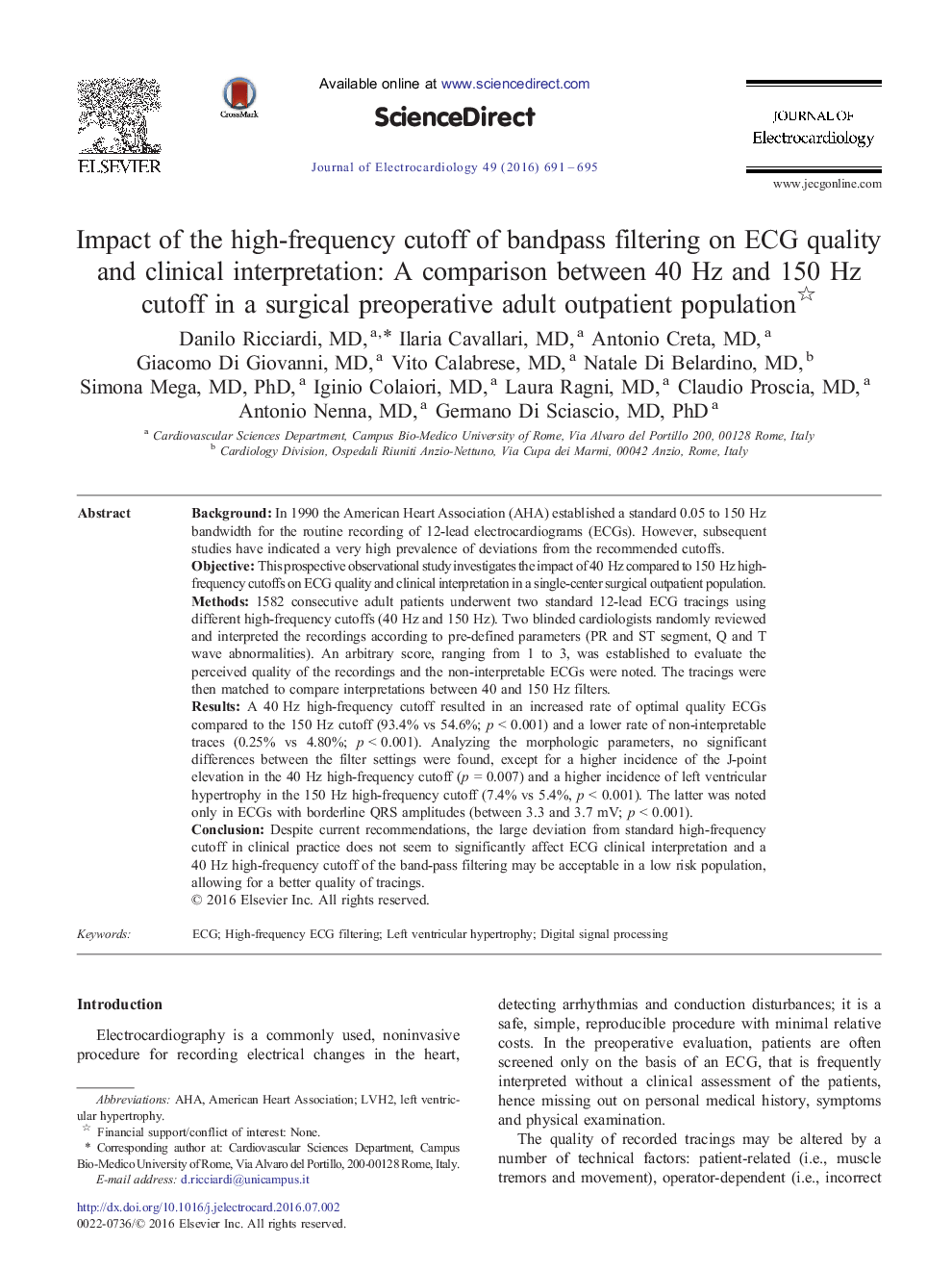| Article ID | Journal | Published Year | Pages | File Type |
|---|---|---|---|---|
| 2967306 | Journal of Electrocardiology | 2016 | 5 Pages |
•There is a large prevalence of deviations from the recommended cut-offs of ECG filtering.•This study investigates the impact of 40 Hz high pass filtering compared to 150 Hz high pass filtering on ECGs perceived quality and clinical interpretation.•We demonstrated that the 40 Hz high pass filtering does not affect ECG clinical interpretation, while allowing better quality of tracings.
BackgroundIn 1990 the American Heart Association (AHA) established a standard 0.05 to 150 Hz bandwidth for the routine recording of 12-lead electrocardiograms (ECGs). However, subsequent studies have indicated a very high prevalence of deviations from the recommended cutoffs.ObjectiveThis prospective observational study investigates the impact of 40 Hz compared to 150 Hz high-frequency cutoffs on ECG quality and clinical interpretation in a single-center surgical outpatient population.Methods1582 consecutive adult patients underwent two standard 12-lead ECG tracings using different high-frequency cutoffs (40 Hz and 150 Hz). Two blinded cardiologists randomly reviewed and interpreted the recordings according to pre-defined parameters (PR and ST segment, Q and T wave abnormalities). An arbitrary score, ranging from 1 to 3, was established to evaluate the perceived quality of the recordings and the non-interpretable ECGs were noted. The tracings were then matched to compare interpretations between 40 and 150 Hz filters.ResultsA 40 Hz high-frequency cutoff resulted in an increased rate of optimal quality ECGs compared to the 150 Hz cutoff (93.4% vs 54.6%; p < 0.001) and a lower rate of non-interpretable traces (0.25% vs 4.80%; p < 0.001). Analyzing the morphologic parameters, no significant differences between the filter settings were found, except for a higher incidence of the J-point elevation in the 40 Hz high-frequency cutoff (p = 0.007) and a higher incidence of left ventricular hypertrophy in the 150 Hz high-frequency cutoff (7.4% vs 5.4%, p < 0.001). The latter was noted only in ECGs with borderline QRS amplitudes (between 3.3 and 3.7 mV; p < 0.001).ConclusionDespite current recommendations, the large deviation from standard high-frequency cutoff in clinical practice does not seem to significantly affect ECG clinical interpretation and a 40 Hz high-frequency cutoff of the band-pass filtering may be acceptable in a low risk population, allowing for a better quality of tracings.
